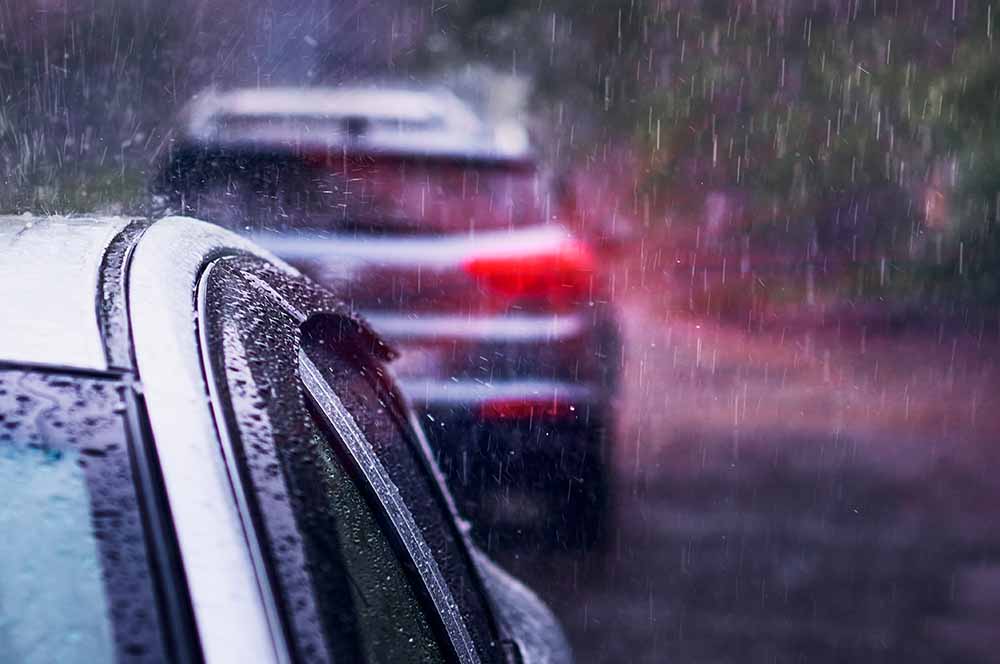
Extreme weather, including ice storms and high winds, is nothing new for many Canadians. But whether you’re new to Canada or have lived here your whole life, it’s important to know and follow best practices for extreme weather driving to keep yourself, your passengers, and everyone else on the roads safe. While common sense and an up-to-date
Be informed Be visible Be cautious Be prepared Be insured
Be informed
Whether it's a winter snowstorm or a summer rainstorm, it’s always a good idea to check a trusted local news source for up-to-the-minute information on road conditions before heading out. If conditions are severe and your trip isn’t urgent, it’s probably best to stay off the roads.
Be visible
Extreme weather and poor visibility often go hand in hand, so make sure to turn on your regular-beam headlights before beginning your journey. Cars in Canada are equipped with always-on daytime running lights by law, but on older models this doesn’t include rear lights, which could make you all but invisible to vehicles behind you. When in doubt, just turn on your lights.
Be cautious
One of the first rules of
Be prepared
Driving in extreme weather increases your odds of being stranded by the side of the road, but regardless of what’s happening outside it’s always a good idea to keep
In addition to the general advice above for safe driving in extreme weather, follow these basic tips for specific weather events:
Snow and ice
Fog
Thick fog can arrive suddenly and without warning, which is all the more reason to know how to safely navigate it ahead of time. Make sure your lights are on, and avoid using high beams. Reduce your speed, signal early, and use the white painted line on the right as a guide to help you stay in your lane.
Flooding
Heavy rainfalls and spring thaws can lead to flooding, which presents an added danger for drivers. Moving water can easily carry even large vehicles away, and standing water can cause engines to stall, leaving your vehicle stranded. It’s easy to underestimate the depth of a flooded area and overestimate your vehicle’s capability to cross it – especially for drivers of SUVs and pickup trucks. If you encounter a flooded area the best advice is to turn around and find another way (or another time) to get where you’re going.
Fires
Wildfires move quickly and can be extremely destructive, which is why you should avoid driving near active wildfires at all costs. If you see evidence of a wildfire ahead, turn around and get out of the area. If you find yourself driving in the vicinity of a wildfire, turn on your headlights and hazard lights, roll up your windows, and turn on your A/C to minimize the amount of smoke inside your vehicle.
High winds and hurricanes
The best place to be in the event of high winds or a hurricane is at home or in an approved shelter like a school or community centre. If you have to drive (in the event of an evacuation, for example) keep your lights on, don’t speed, and stick to main roads and highways that are less likely to be obstructed by downed trees.
Be insured
The best thing you can do in the event of extreme weather is stay home and keep off the roads. In bad weather, as with every journey you take in your vehicle, it’s important to be covered with an
Jeremy Freed is a freelance writer and editor based in Toronto. His writing about fashion, travel, food and design appears in Sharp, Harry and re:Porter magazines, among many others.